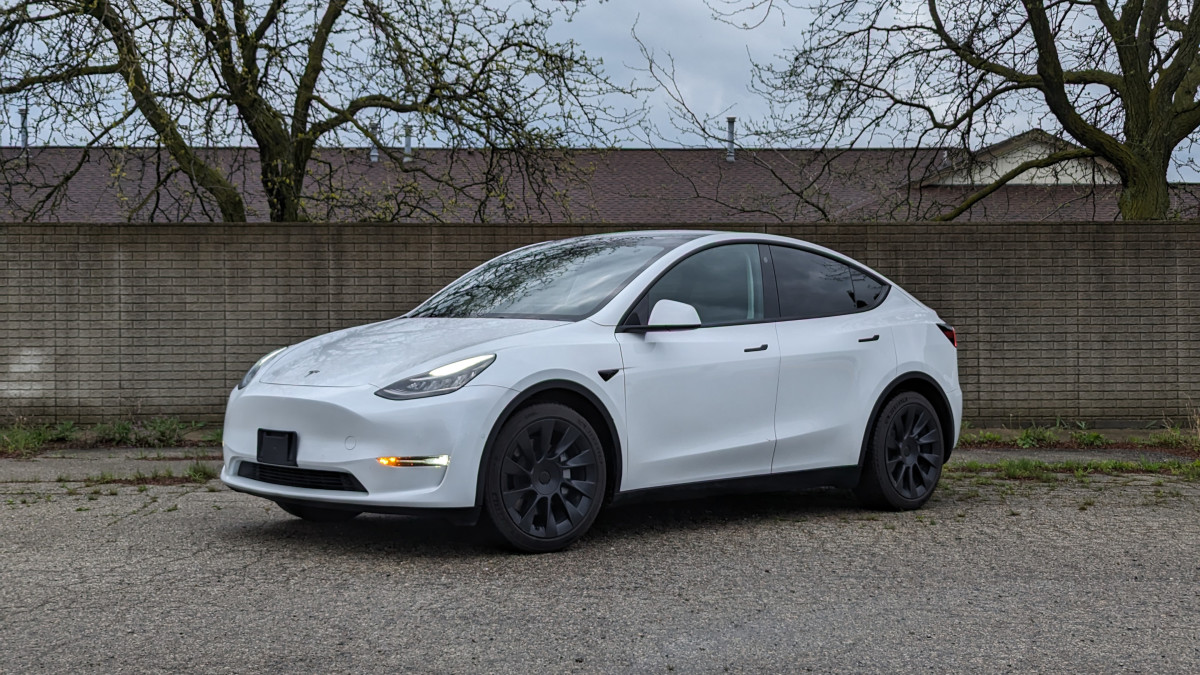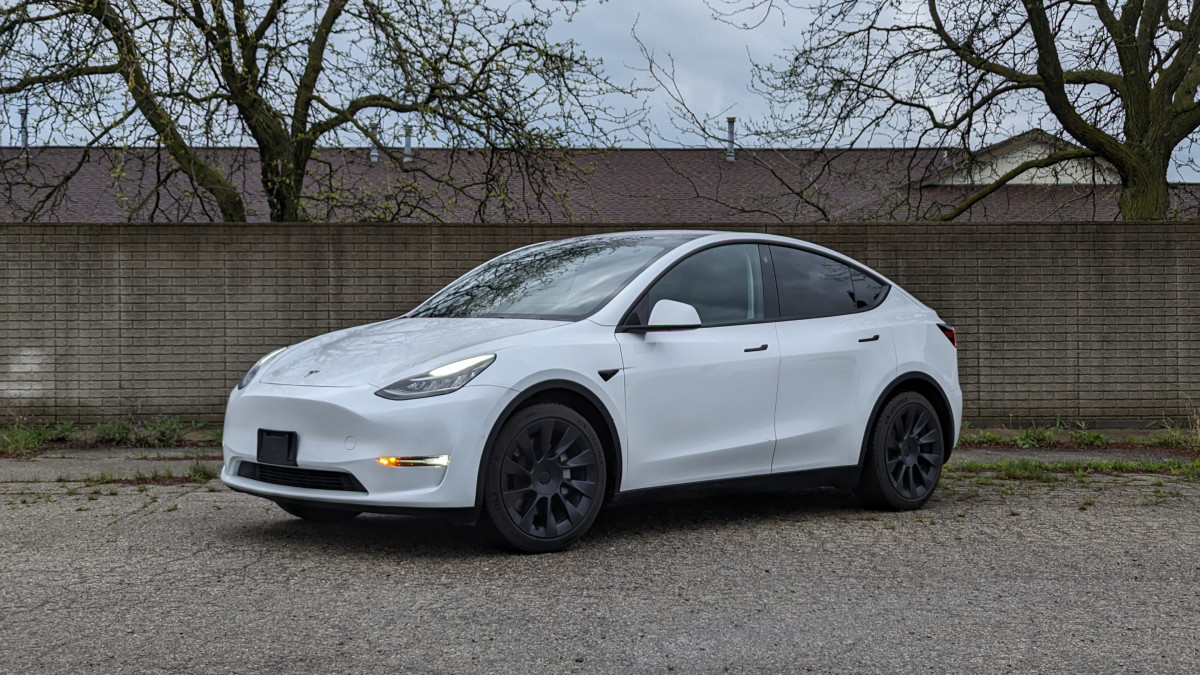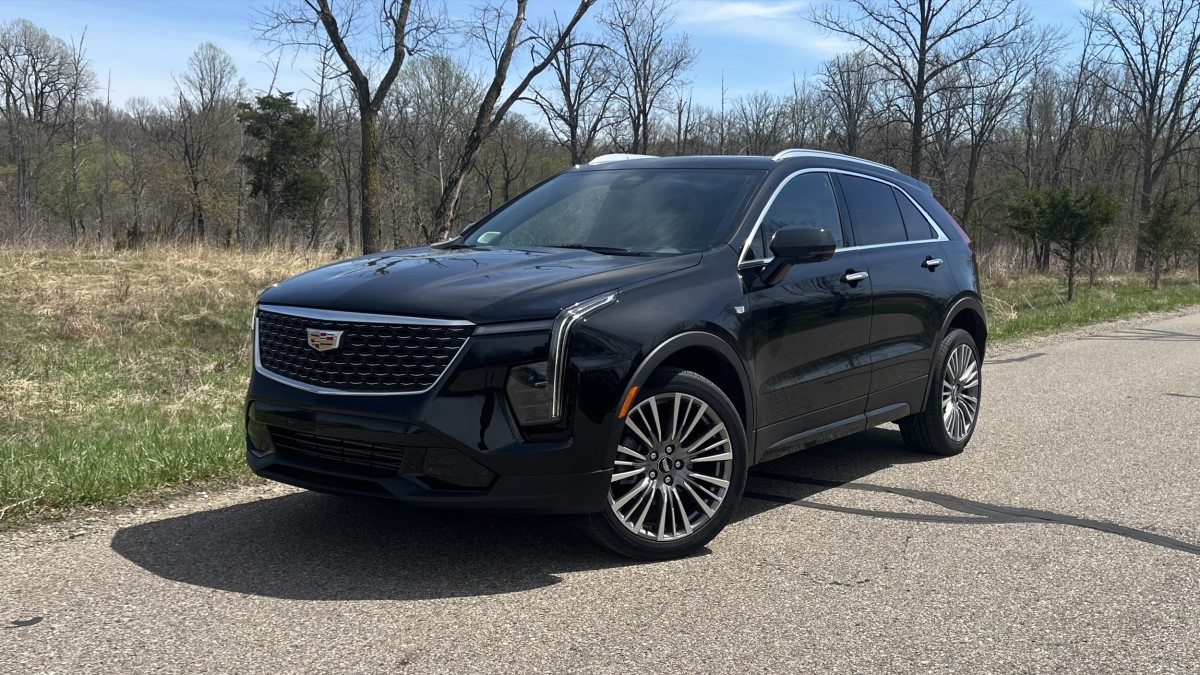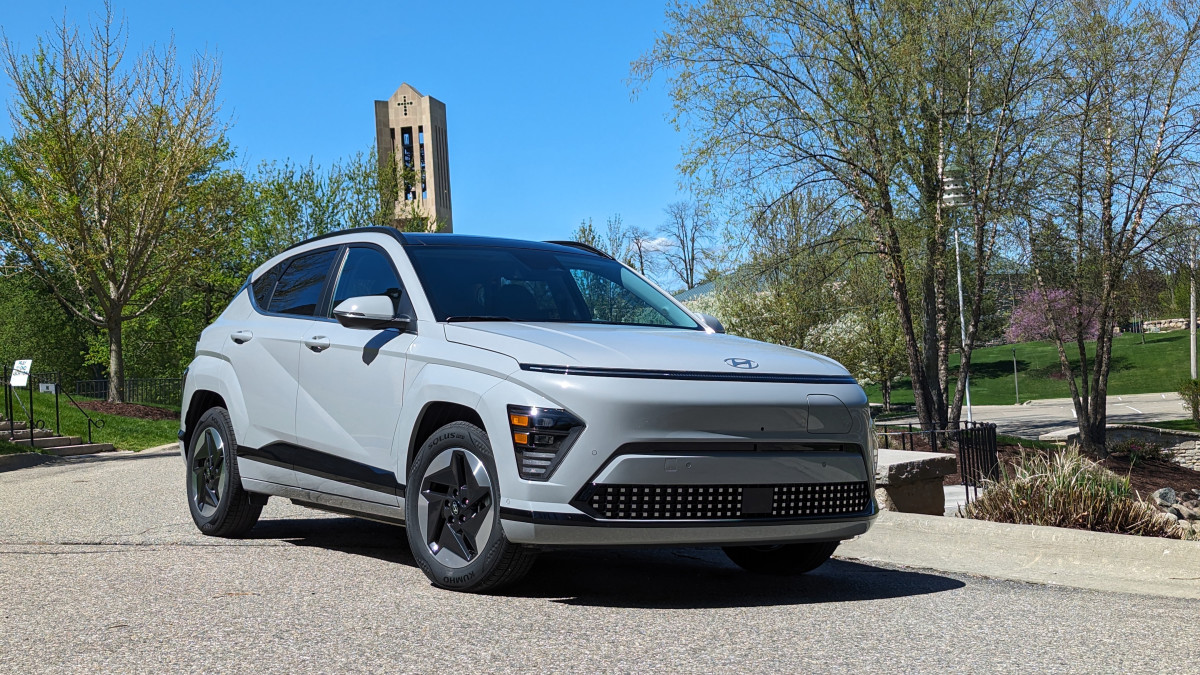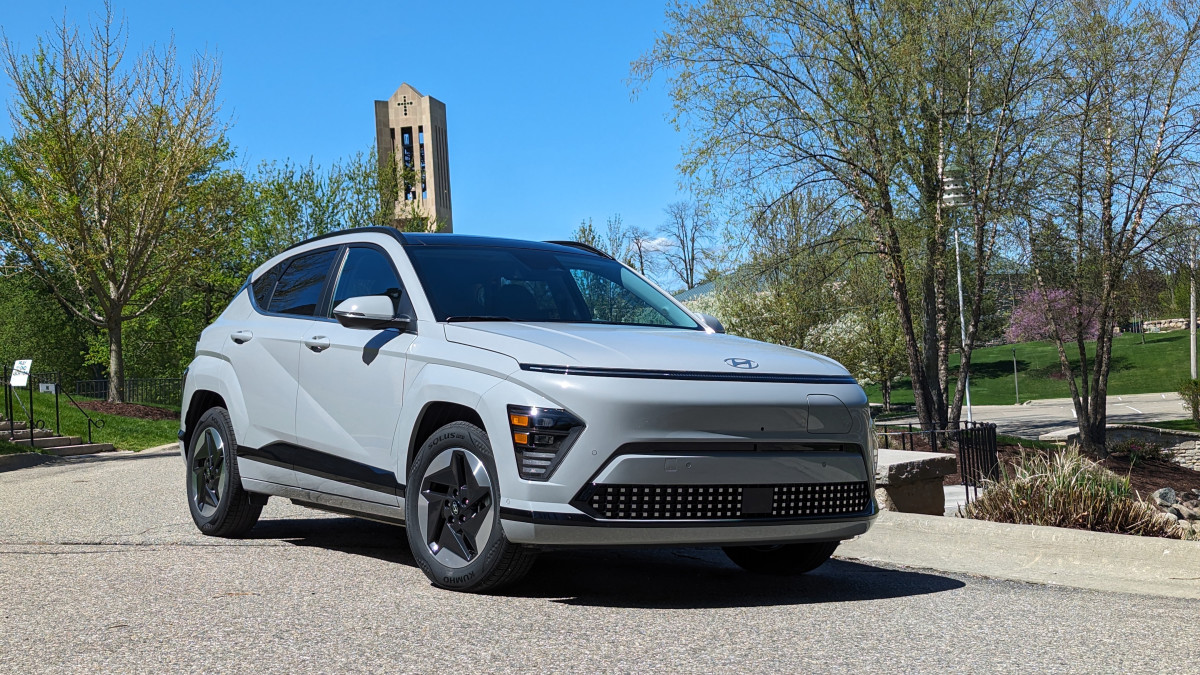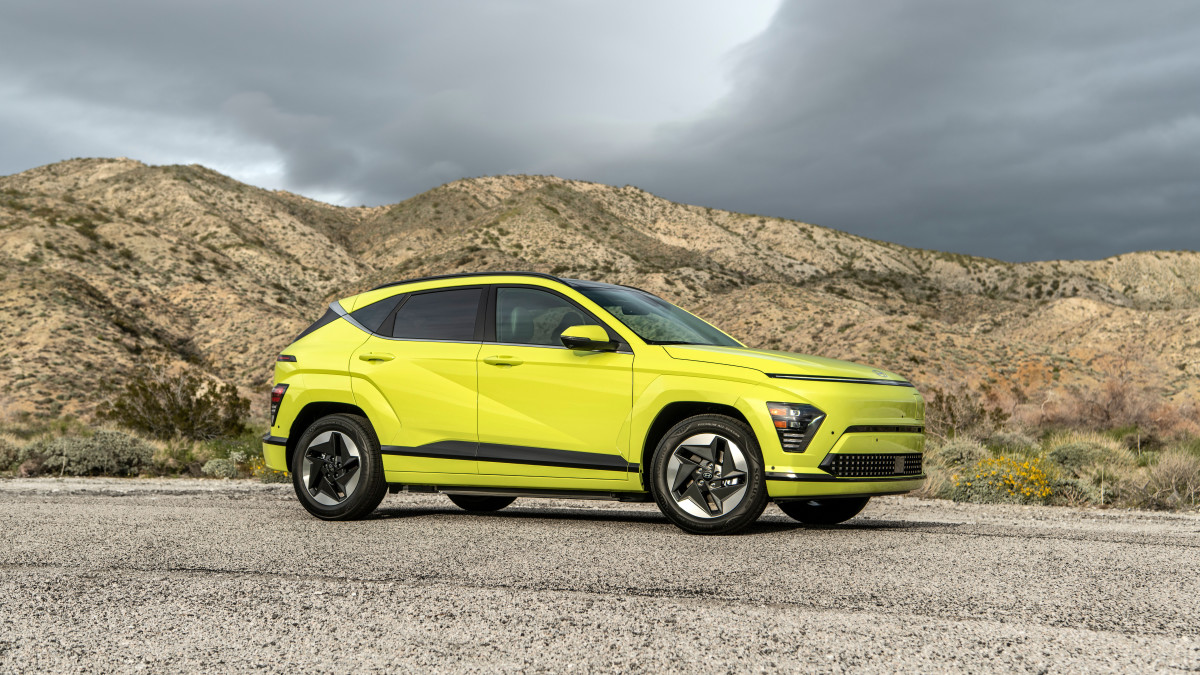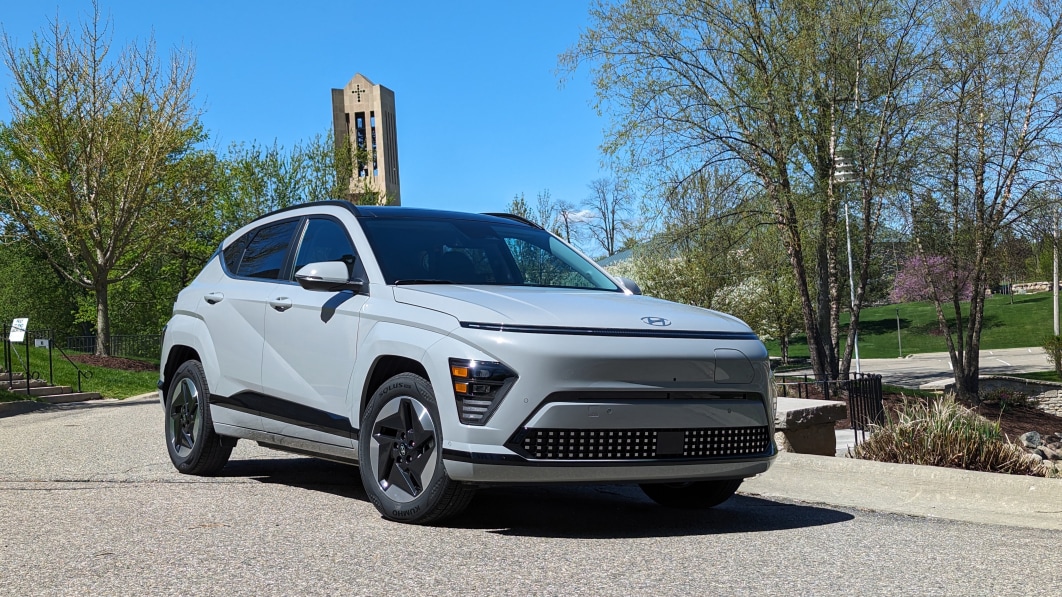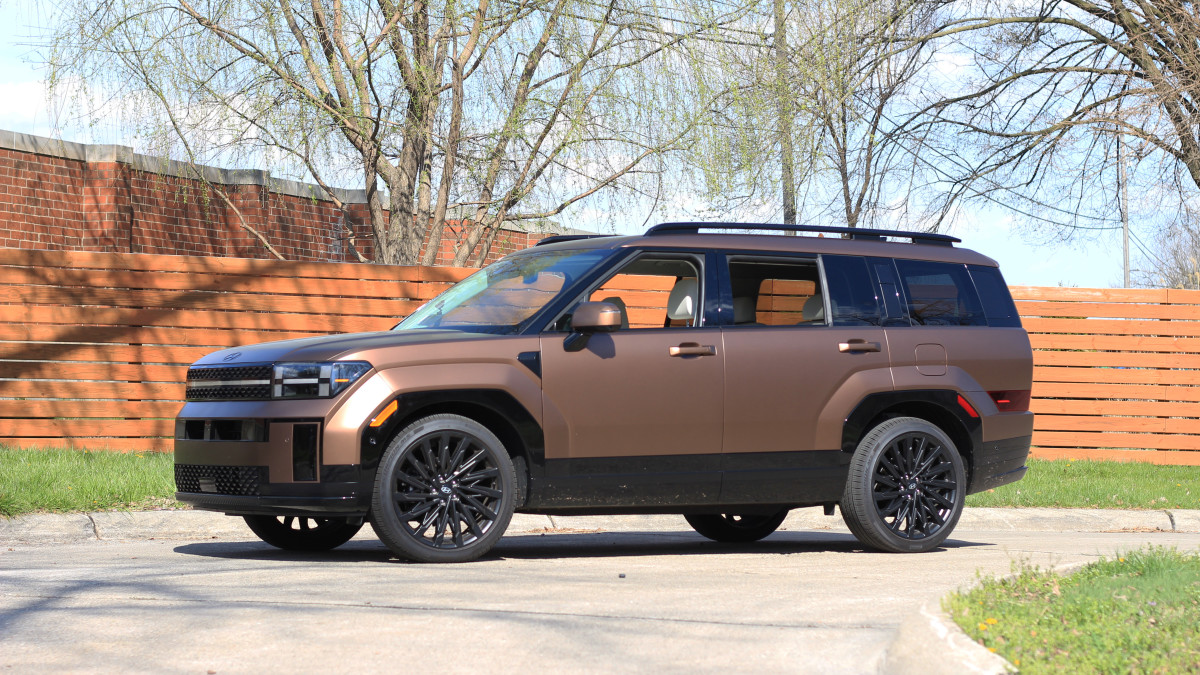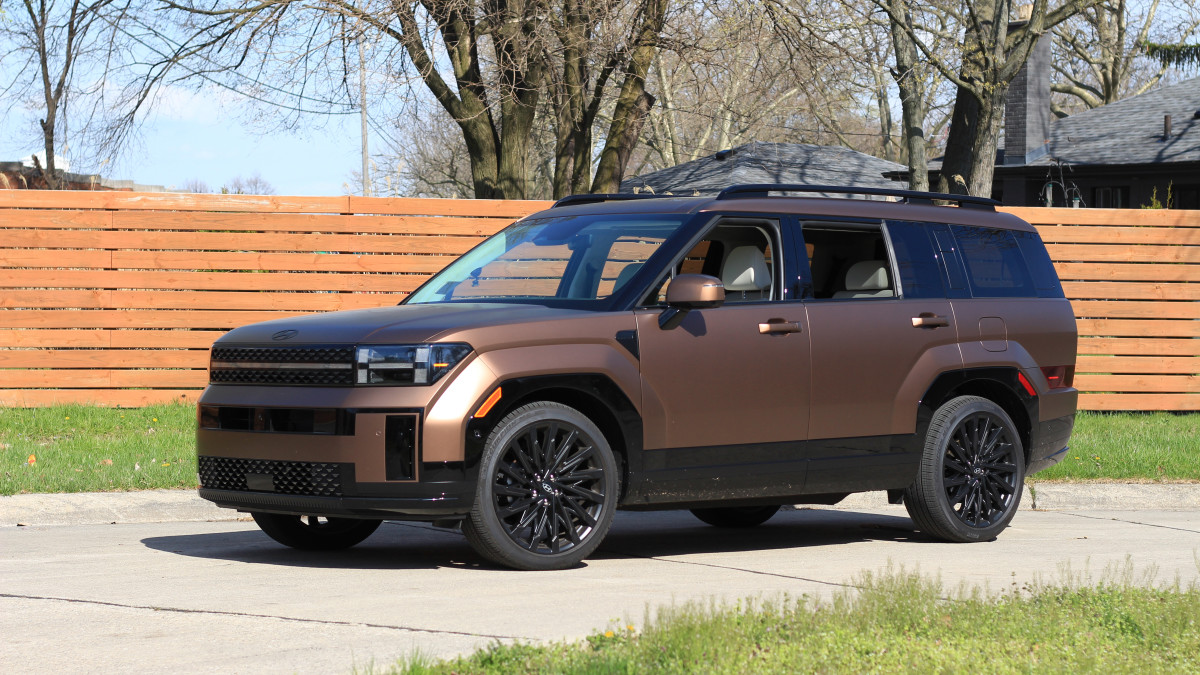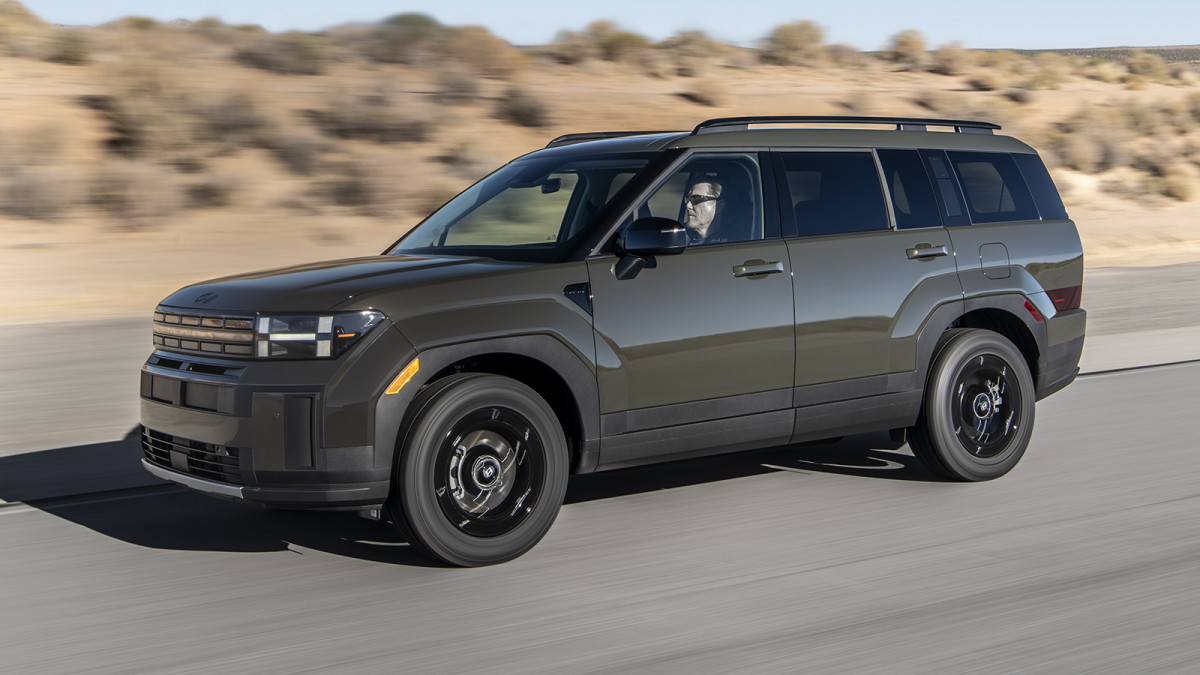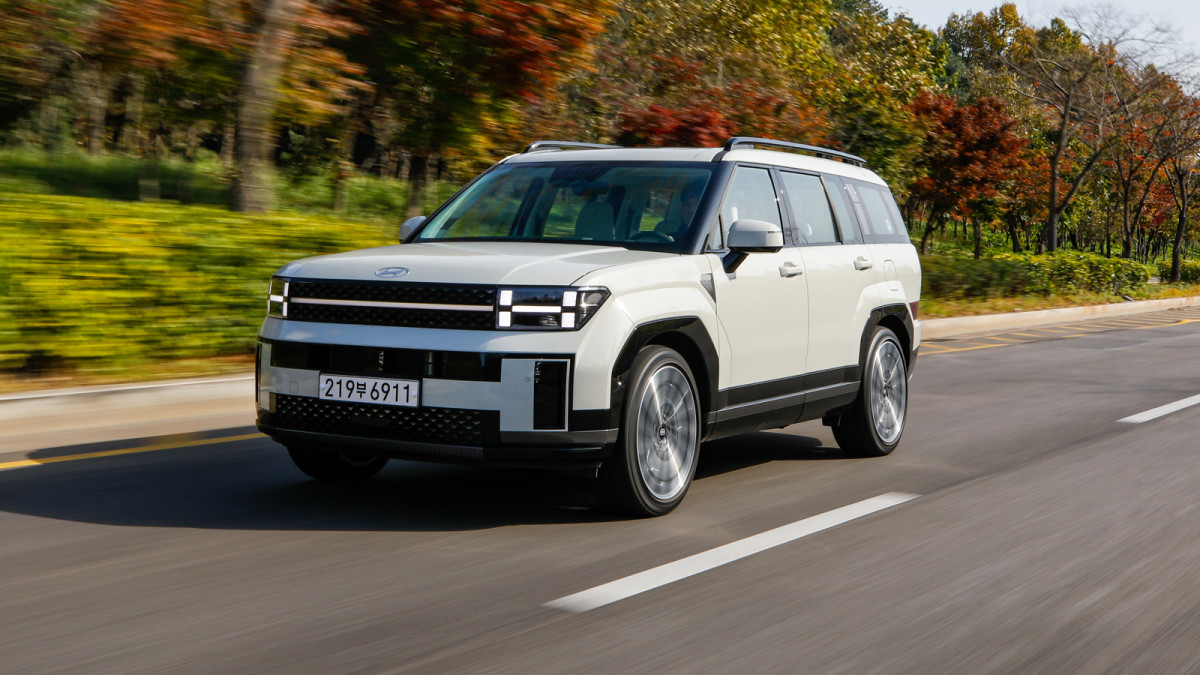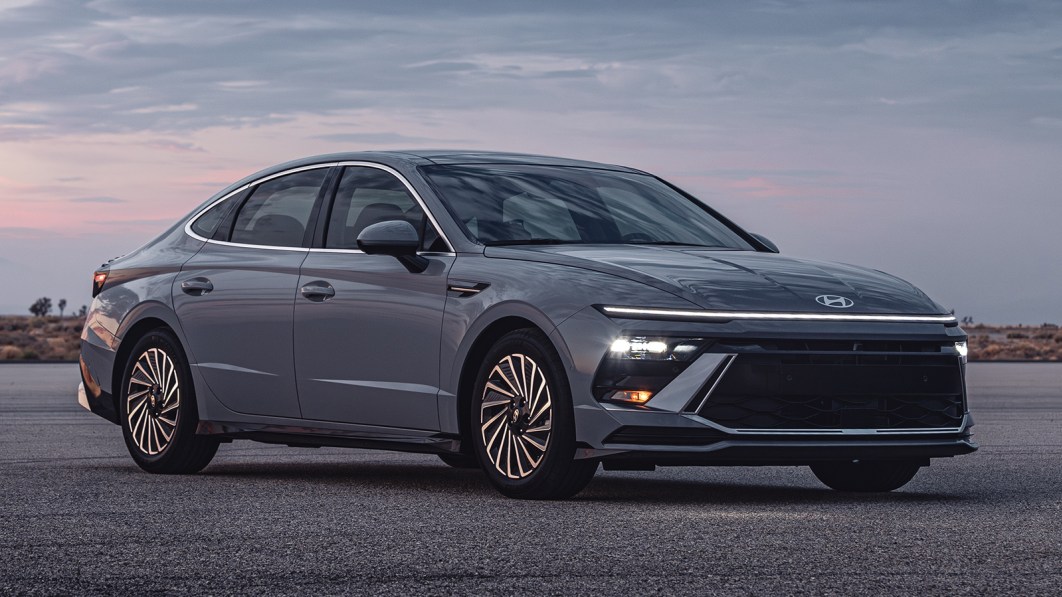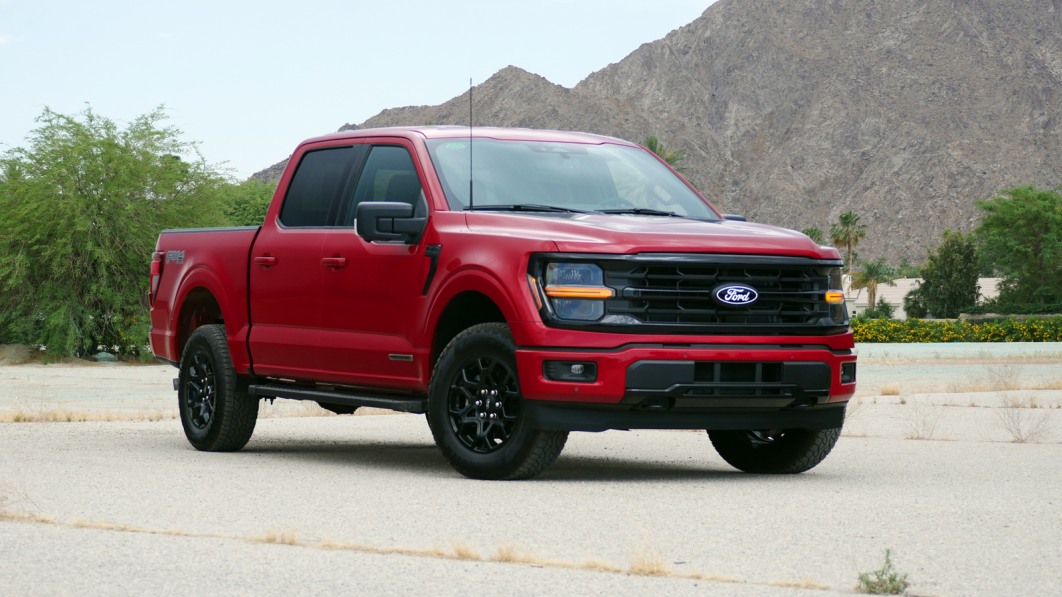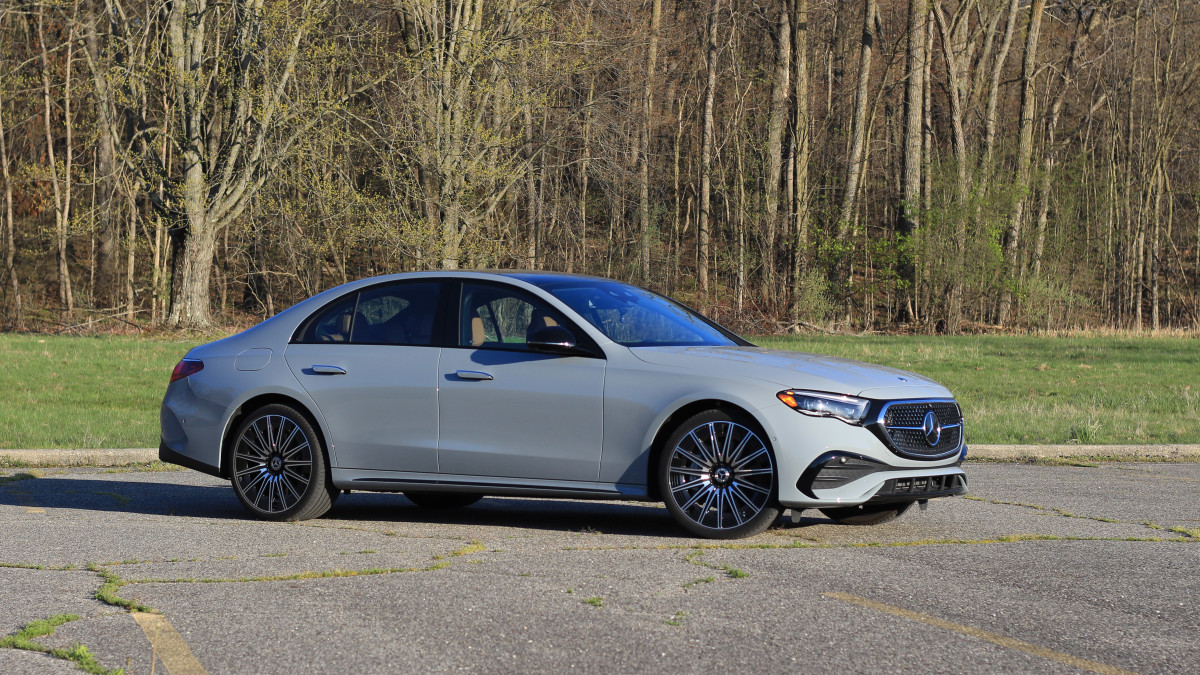
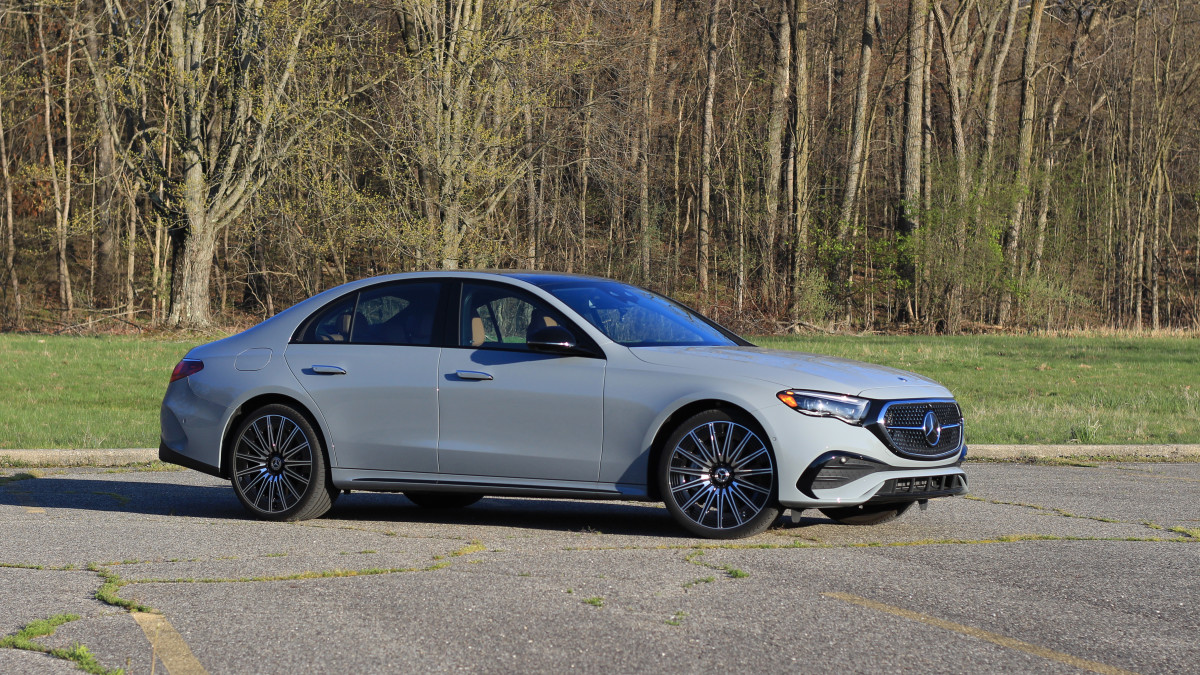
Zac Palmer
Pros: Plush ride; smooth, quiet and powerful engines; beautiful interior with vast array of tech
Cons: Styling is verging on controversial; gets expensive quick with options
The 2024 Mercedes-Benz E-Class picks up right where the previous generation left off by being a classy, tech powerhouse that also happens to be oh-so-sweet to drive. For now, we get a four-cylinder and inline-six as powertrain options, but future years might see AMG return. Unlike BMW’s strategy in which its EVs and gas-powered sedans share a body, Mercedes continues on with its E-Class being a traditional three-box sedan and its EQE (electric equivalent) adopting the potato-like EQ styling for its EVs. We’re glad the E-Class hangs onto tradition here, as even though its flashy grille and three-pointed star taillights are a little much, it’s still a sleek and beautifully proportioned luxury sedan.
If you were hoping for the latest and greatest of Mercedes’ tech, you’re certainly getting it in the E-Class, perhaps to a fault. The “Superscreen” turns your whole dashboard into an array of bright and colorful touchscreens, although touch controls replace the previous generation’s clicky, satisfying buttons. In some ways, it’s a downgrade, but Mercedes tries to make up for the loss of analog goodness with fancy lights, a trick audio system and innovative features like video calling and artificial intelligence routines, the last effort in hopes you won’t even need to touch any buttons while the car automatically does your bidding. Mercedes isn’t alone in this focus on tech as BMW has similarly out-there features in the 5 Series, but for those who may not care about any of these “innovations,” rest easy that you can ignore them, turn them off or not specify them at all, leaving you to enjoy a new E-Class that still drives and comports itself as an E-Class is meant to do.
Interior & Technology | Passenger & Cargo Space | Performance & Fuel Economy
What it's like to drive | Pricing & Trim Levels | Crash Ratings & Safety Features
What's new for 2024?
The E-Class is completely new for 2024 as it enters its sixth generation. Its look is a familiar one, but Mercedes piled the tech high this time around.
Note that the E 450 All-Terrain wagon is being sold for 2024, but it’s still based on the previous generation and therefore extremely different from the sedan. This review is long enough without also packing it with descriptions of what is effectively a totally different car. You can read our review of it here.



What are the E-Class’ interior and in-car technology like?
Like most Mercedes these days, the in-car technology dictates the interior design. The E-Class offers an optional “Superscreen” (the lesser sibling to the EQ’s “Hyperscreen”), but it’s really just a questionably useful passenger-side screen added to the standard pair of screens. Frankly, we’d skip it, especially since you’ll be missing out on the beautiful wood trim that’s fitted without the screen.
There’s no avoiding screens, though. The 14.4-inch central touchscreen display is big, vibrant and utilizes the same interface found in other top-shelf Mercedes. You can default to a simple home screen of various icons or the “Zero Layer” that features a vivid navigation map and a preferred selection of tiles running along the bottom (such as audio or phone). There’s a lot to digest, and the learning curve is not surprisingly steep, but once acclimated, we’ve found it quite easy to use. The navigation system is also exceptional (programming it couldn’t be easier thanks to Mercedes’ above-average voice recognition system), limiting the need for Google Maps and possibly even Apple CarPlay and Android Auto that are still included. You can also fit a new dash-top camera that opens the door to video calling or shooting videos on TikTok, but that seems more like gimmickry.
It almost goes without saying, but the E-Class’ seats, materials and general appointments are all befitting of a car its price, and the color/trim choices are abundant. You’ll need some acclimation time to get fully up to speed with the tech, but there’s no debating the E-Class’ interior is state of the art in terms of both new features and luxury.


How big is the E-Class?
This E-Class is just a hair bigger than the previous one, meaning it still has plenty of rear seat space for adults, though we’ll note Mercedes mounts its front seats fairly low to the ground, so you could be slightly confined if there’s a taller driver in front of you. Compared to other midsize luxury sedans like the BMW 5 Series or Audi A6, the E-Class is right on par where it needs to be, as all three Germans are plenty large in back.
As for the trunk space, best to direct you to our comprehensive luggage test where we determine the E-Class’ 19 cubic-feet of space is definitely big, but slightly deceiving from a pure numbers perspective. That said, it’ll fit four people’s worth of luggage without protest and still have a little room left over.

What are the E-Class’ fuel economy and performance specs?
You can choose between the E 350 4Matic and the E 450 4Matic for 2024, and as the “4Matic” bit indicates, all-wheel drive is standard. The base E 350 4Matic uses a 2.0-liter turbocharged four-cylinder engine that develops 255 horsepower 295 pound-feet of torque. Both engines shift via a nine-speed automatic transmission and feature a mild-hybrid system. The base 2.0-liter is good enough for a 6.1-second 0-60 mph run. It returns an EPA-estimated 24 mpg city, 33 mpg highway and 27 mpg combined.
The E 450 has a 3.0-liter turbocharged inline-six good for 375 hp, 369 lb-ft and a 4.4-second 0-60 sprint. Its fuel economy falls to 22 mpg city, 31 mpg highway and 25 mpg combined.
Mercedes has revealed an AMG E 53 Hybrid (PHEV) for 2025, but we’ve not driven that model yet. You can read all about it in our reveal post here.
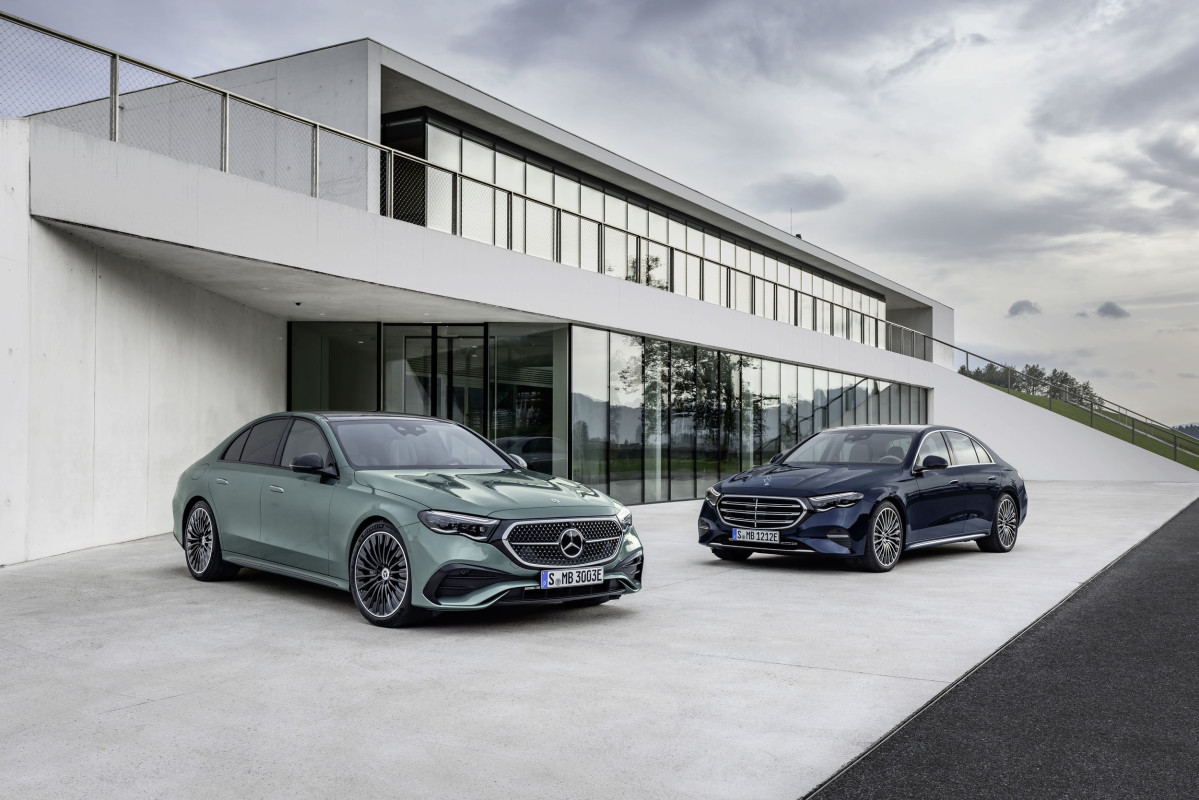
What's the E-Class like to drive?
We have not tested a 2024 E-Class with the stock suspension and steering system, so we can only comment about the E 350 and E 450 when equipped with the $3,200 Airmatic package. It sure seems worth the money, though, as it cements the E-Class’ status a a dual threat. It can coddle you with a pillowy-soft ride from its supple Airmatic air suspension, but it can also sharpen its responses enough to be both fun and fast on a mountain road. The addition of rear-wheel steering brings a lot to the table, offering 4.5 degrees of rear steering that allows the E-Class to drive smaller on tight city streets but still benefit from greater stability at high speeds.
Both the four-cylinder and inline-six benefit from a super-smooth 48-volt mild-hybrid system that makes starting and stopping the engine seamless in traffic. Neither engine makes much sound in the cabin, though the inline-six’s tuneful song can be heard when you’re hammering it, which is just the way we’d want it. Mercedes has yet again put together one of the best all-around daily driving luxury machines on the planet with the E-Class, from the noise isolation to the effortless way it moves down the road with near S-Class-level comfort. We’re excited for AMG versions to join the lineup to spice things up even further, though.
What other Mercedes-Benz E-Class reviews can I read?
2024 Mercedes-Benz E-Class First Drive Review: Driven to distraction
We go over everything that's new about the next-gen E-Class and provide initial driving impressions.
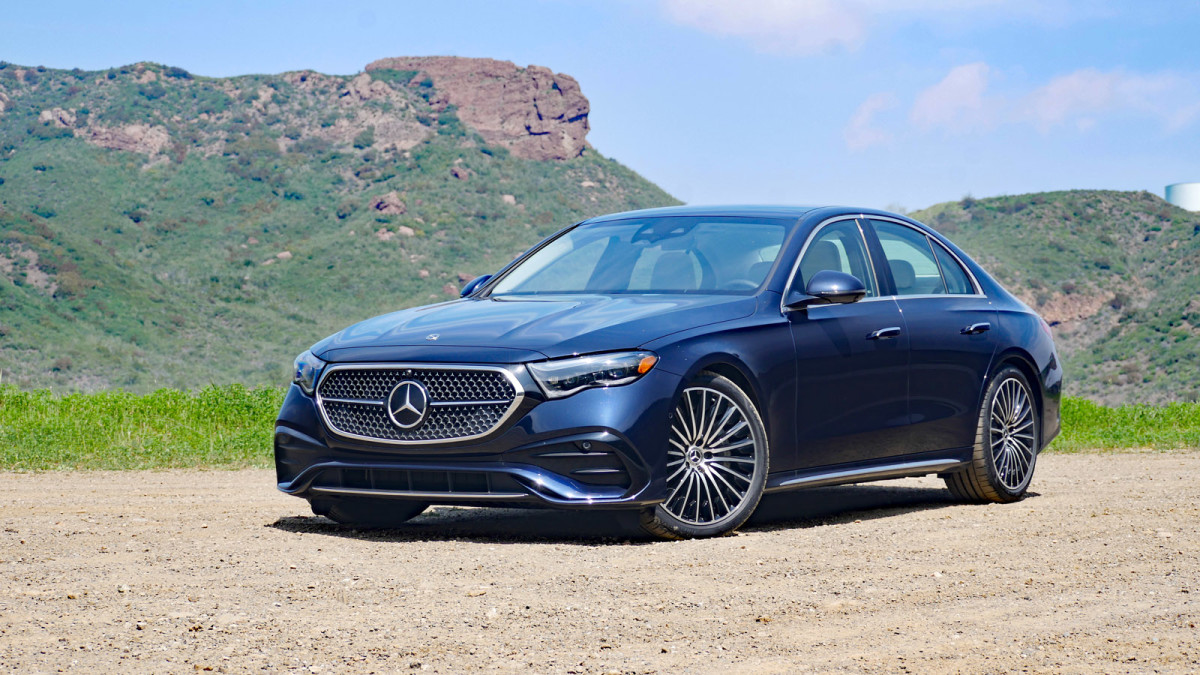
James Riswick
Mercedes-Benz E-Class Luggage Test: How big is the trunk?
Here's how much luggage you can fit in the E-Class' trunk.

What is the 2024 E-Class’ price?
The E-Class starts at $63,450 for the E 350 4Matic in its base Premium trim. There’s only one other trim available, named Pinnacle, and it starts at $66,000. For the extra coin you get an illuminated grille, the active ambient lighting, heat- and noise-insulating glass, and a head-up display.
If you want the inline-six-equipped E 450, it starts at $69,250, which is a fair price to pay for the extra power and excellent engine you’ll get. The Pinnacle version of the E 450 brings the highest base price up to $71,800.
Of course, you’re going to want options. The snazzy Manufaktur Alpine Grey you see in photos at the top of this post is $1,750, and the accompanying 21-inch AMG wheels are $3,050. Upgrading from MB-Tex to leather is $1,620, and going all the way to the top-shelf Nappa leather is $2,990. The Superscreen is a $1,500 standalone option we could go without, but the $1,950 Driver Assistance Package (brings in all of Mercedes’ stellar active assist systems) and $3,200 Airmatic Package (air suspension, adaptive dampers and rear-wheel steering) are highly recommended. The $990 Digital Lights and $1,030 Burmester 4D sound system make for some excellent nice-to-haves, as well.
What are the E-Class’ safety ratings and driver assistance features?
The E-Class comes with a massive array of standard (and even more optional) driver assistance features. Standard items include automatic emergency braking, blind-spot warning with exit-warning assist, auto high-beams, driver attention monitoring, and front and rear parking sensors. Notable optional extras include adaptive cruise control, lane-keeping, lane-centering, auto-lane change, auto emergency braking when turning or with cross-traffic, and projections for Digital Lights that can alert you to things like construction zones, following distance and more.
The E-Class had not been third-party crash tested at the time of this writing, but the previous generation 2023 E-Class received a Top Safety Pick+ award from the Insurance Institute for Highway Safety.
Related video:

